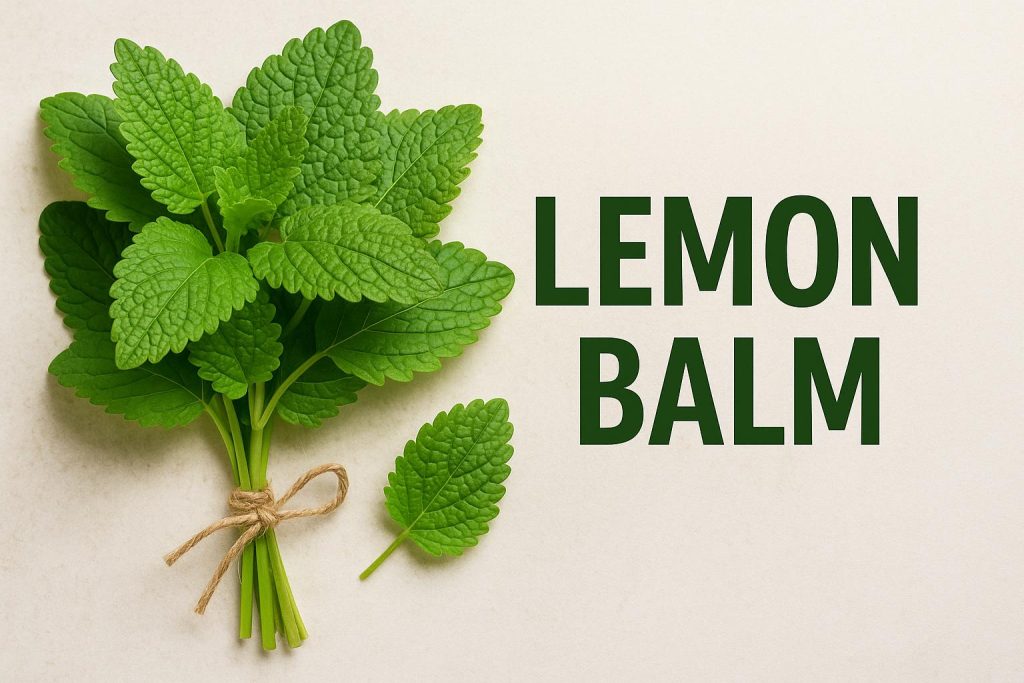
Lemon Balm: An Overview
Lemon balm, scientifically known as Melissa officinalis, is a fascinating perennial herb belonging to the mint family. This aromatic plant is celebrated for its citrus-like fragrance, emanating from its green, lush leaves. With a rich history and a range of contemporary uses, lemon balm has established itself as a staple in both gardens and herbal medicine collections worldwide. This article delves into the botanical origins, historical significance, contemporary applications, and cultivation practices associated with this remarkable herb.
Historical Uses and Origin
Lemon balm traces its roots to the sunny landscapes of Southern Europe and the Mediterranean. Throughout history, it captured the interests of many ancient civilizations, particularly the Greeks and Romans. These cultures revered lemon balm for its array of perceived health benefits. Historical documents suggest that the Greeks and Romans utilized lemon balm strategically in their medicinal practices, emphasizing its calming and digestive properties.
Moving into the Middle Ages, lemon balm maintained its popularity throughout Europe, becoming a quintessential herb in various remedies. It was often incorporated into teas and balms designed to alleviate a multitude of common ailments. The herb’s widespread integration into everyday life during this period highlights its lasting utility and appeal.
Botanical Characteristics
From a botanical standpoint, lemon balm presents a distinctive appearance. The plant can reach a height of 70 to 150 centimeters, characterized by its square stems—a signature trait of the mint family. Its heart-shaped leaves, when crushed, release a fragrant, lemon-like aroma, which is both invigorating and soothing. Complementing its lush foliage, lemon balm produces small, delicate flowers, usually white or pale yellow. These flowers are particularly attractive to bees, which is fitting, considering the genus name Melissa is derived from the Greek word for honeybee, highlighting the plant’s natural appeal to pollinators.
Contemporary Uses
In today’s world, lemon balm enjoys widespread use in culinary and medicinal domains. Its vibrant leaves serve as both a flavorful and aromatic enhancement to various culinary dishes. Whether used fresh or dried, lemon balm adds an enticing lemony nuance that can elevate numerous recipes. Additionally, its leaves can be steeped to create a calming and refreshing tea, a testament to its enduring role in herbal traditions.
Medicinal Benefits
The medicinal benefits of lemon balm are diverse, attracting attention from herbalists and researchers alike. The herb is often associated with several health advantages:
Calming Effects: Lemon balm is renowned for its potential to induce relaxation and reduce stress and anxiety. The plant’s calming properties have been the subject of scientific investigation, with some studies exploring its potential sedative effects.
Digestive Health: Beyond its calming capabilities, lemon balm is also esteemed for its contributions to digestive health. It is rumored to ease digestive discomfort such as bloating and indigestion, providing gentle relief from these common disturbances.
Topical Applications: Lemon balm’s utility extends to topical applications, particularly concerning its antiviral properties. Creams formulated with lemon balm extracts are frequently employed to treat conditions like cold sores, capitalizing on its reputed antiviral effects.
For those keen on delving deeper into its health benefits, consulting academic journals and authoritative sources is advisable to understand the full scope of lemon balm’s potential effects and mechanisms.
Growing Lemon Balm
Cultivating lemon balm is a straightforward process, making it an ideal choice for both novice and experienced gardeners. This herb is adaptable and thrives across a variety of environments. While it favors well-drained soil, lemon balm can flourish regardless of whether it is planted in full sun or partial shade.
To maintain a prolific and bushy growth habit, regular pruning is recommended. This practice not only encourages the plant to grow robustly but also helps control its spread. Without proper management, lemon balm can become invasive, overtaking garden spaces with its vigorous growth.
Cautions and Considerations
Although lemon balm is generally safe for most individuals, certain precautions should be considered prior to its use for medicinal purposes. It is prudent to consult with a healthcare provider, especially for those who are pregnant, nursing, or managing chronic health conditions. An evaluation of potential interactions with medications, particularly sedatives and thyroid treatments, is essential.
Understanding proper dosage and usage is foundational to safely and effectively utilizing lemon balm. Educating oneself about the herb’s properties not only enhances its beneficial effects but also mitigates any potential risks associated with its overuse or incorrect application.
In summary, lemon balm stands as a versatile herb, deeply rooted in history and widely cherished in contemporary practices. From its calming properties to its culinary versatility and ease of cultivation, lemon balm offers a wealth of benefits and opportunities for incorporation into daily life. By appreciating and respecting its historical and modern-day significance, enthusiasts of this herb can enjoy its multifaceted contributions to well-being and culinary enjoyment.

